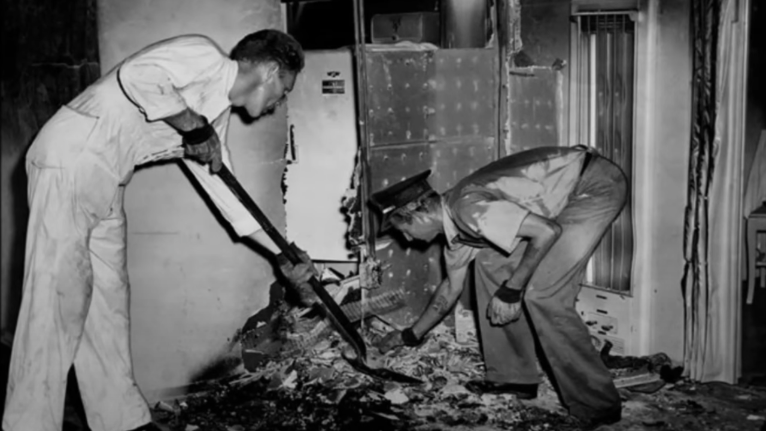ST. PETERSBURG, Fla. — On the morning of July 2, 1951, a St. Petersburg resident named Pansy Carpenter went to deliver a telegram to her resident, 67-year-old Mary Hardy Reeser. She found the doorknob to the apartment at 1200 Cherry Street hot to the touch, and called the police.
The horror they found inside that apartment touched off an investigation that would be debated for decades.
What You Need To Know
- Mary Hardy Reeser died in St. Petersburg in 1951
- She was suspected of dying of spontaneous human combustion
- An FBI investigation found the cause of death to be accidental, but the case still raises questions to this day
What’s known is that Mary Hardy Reeser was nearly completely cremated—reportedly, only her skull, a portion of her spine and her left foot hadn’t been reduced to ashes; the foot was found still in a slipper. The chair in which she had been seated showed signs of fire damage, as did a few nearby items, but overall, the apartment showed few signs of fire.
The St. Petersburg Chief of Police at the time, the now-deceased J.R. Reichert, was disturbed enough by the unlikely scene of Reeser’s demise to send evidence to the FBI.
It was one of the first cases of potential spontaneous human combustion to be investigated by national law enforcement.
The event has been covered by the media, discussed online and made the subject of the kind of television shows that favor “dramatic re-enactments” and gravelly-voiced narrators ever since.
No one knows what really happened. The FBI report concluded that Reeser, who’d told a relative she’d taken a sedative that night, most likely fell asleep in the chair while smoking, and became victim to what’s sometimes referred to as “the wick effect,” in which fat and other bodily tissues burn quickly and hotly:
“As indicated above, these cases are explained by the fact that the body becomes ignited from some outside cause such as burning clothing, a burning mattress, chair or other means. Once the body·starts to burn there is enough fat and other inflammable substances to permit varying amounts of destruction to take place. Sometimes this destruction by burning will proceed to a degree which results in almost complete combustion of the body.”
Many, however, have questioned how the generated heat required to cremate a body could leave so much of the immediate surrounding area untouched. Chief Reichert reportedly called in a specialist, now-deceased physical anthropologist Wilton M. Krogman, for his professional opinion; while his notes on the case can’t be found, Krogman was apparently skeptical of the accidental death conclusion, though he later walked back some of his thoughts.
“To this day, I believe that the FBI report given to St. Petersburg police in August 1951 is the most credible, if incomplete, explanation of the incident — that Mrs. Reeser's own body fat provided the fuel for the fire that consumed her,” wrote former Tampa Bay Times columnist Jerry Blizin in 2009. “The FBI said there was no ‘spontaneous human combustion,’ nor was her death caused by lightning or chemicals.”
So what really happened to Mary Hardy Reeser? The world will probably never know, making it one of Tampa Bay’s more peculiar (cue gravelly voice) unsolved mysteries.



